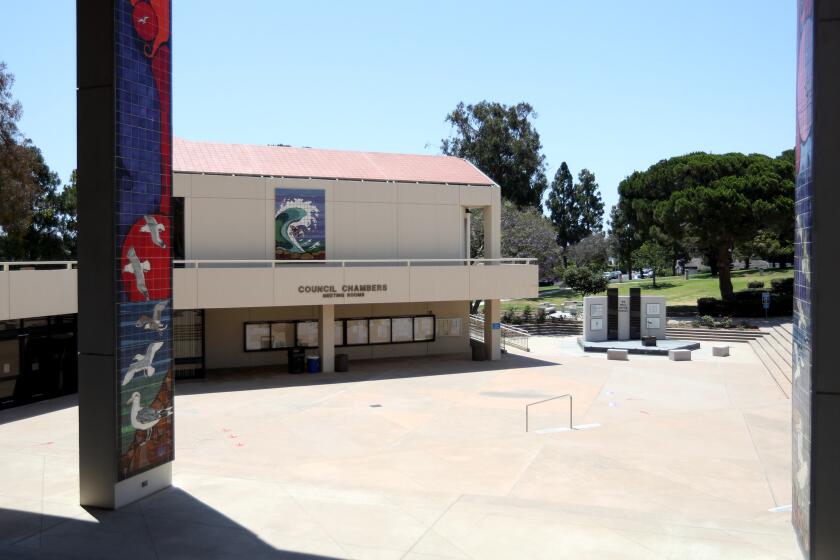Newport sold $1.8M in oil last year
- Share via
As Gulf Coast residents suffer from their loss of beaches and bays, residents of Newport can enjoy their water and sand for exactly the same reason – oil.
For 30 years the city of Newport Beach has been operating its own oil wells on Banning Ranch. All of the revenue from crude and natural gas goes straight to the city’s coffers, into a fund for beach and bay maintenance.
And it’s not a small amount – in 2009 the city sold $1.8 million worth of black gold. That’s a serious chunk at a time when the city was facing a $12 million budget deficit.
“It helps out in this economy. It’s kind of a neat thing that we have,” said George Murdoch, utilities director for the city.
Murdoch’s department operates the 16 wells through an outside contractor, Gardena-based Sampson Oil. Renick Sampson monitors the wells daily to make sure they’re pumping smoothly.
That’s not always the case, considering they’re 60 years old and extend thousands of feet into the ocean floor.
This technique, called slant drilling, is common along the California Coast, where millions of barrels of oil can be tapped from undersea. But unlike Long Beach and other coastal cities, which charge a royalty on oil production, Newport Beach receives all of the revenue.
The city’s pumping units sit near hundreds of others on the Banning Ranch property. Those are owned and operated by the West Newport Oil Co. Both oil producers lease their land.
If the landowners move ahead with the proposed Banning Ranch development, the oil operators would have to consolidate into one smaller area.
Interestingly, the city’s charter requires that the public approve any re-drilling of oil wells, through a ballot measure.
This was added because, as recently as the 1980s, oil was so abundant it would sometimes gurgle up onto people’s property, Murdoch said.
“Kind of like the Beverly Hillbillies, we didn’t want people to drill in their backyards,” he said.
While designed to prevent unrestricted growth, that provision may impede relocating the existing wells unless it’s modified in this year’s proposed city charter amendments. Murdoch recently recommended that the City Council add new language to make the Banning relocation possible.
Also, he wants the council to consider an overhaul of the wells. Over time, their metal casings have rusted and sand seeps in, clogging the flow and eventually breaking or stopping the system; last year the city lost one well in this manner.
It’s a normal process, Murdoch said.
Such a failure isn’t a huge environmental risk, Murdoch said, because the oil isn’t pressurized and berms would stop the flow of oil into the nearby wetlands.
Also, the human operator would theoretically be on-site to immediately respond, he said.
In 1985 an abandoned well exploded at 44th Street and Balboa Boulevard, sending flames, saltwater and crude oil 50 feet into the air. One city employee, who was working on capping the well, was seriously burned.
Now, all the wells are contained on the Banning property. Their production levels have steadily decreased over time – from 60,000 barrels per year in the 1980s to 29,000 barrels pumped in 2009.
Besides the crude, the city extracts natural gas. This brought in about $50,000 per year until 2008, when the sole natural gas buyer, Hoag Memorial Hospital Presbyterian, was unable to pay for it because of a new utility contract.
Now, the city pumps Hoag the gas for free, just to continue the operation. Murdoch said his department is considering a partnership with the other Banning Ranch producer to create compressed natural gas, an alternative fuel that can power cars, buses and trucks.



